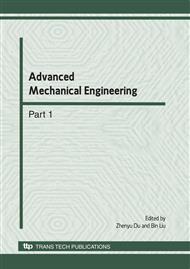p.246
p.250
p.255
p.260
p.265
p.269
p.273
p.277
p.281
Algorithm Based on 5-Axis NC Flank Milling of Arbitrary Surfaces
Abstract:
In order to improve quality and efficiency of the overall five-axis milling for arbitrary surface impellers. In rough milling, the arbitrary surface was replaced by fitted ruled surface, the flank milling was a good method to replace the point milling. In semi-finish milling, the primal surface was replaced by piecewise ruled surfaces, using step flank milling to gain the satisfaction in model’s nicety and machining efficiency. Then , algorithm of the paper is proved to be viable by Model building, NC programming and machining.
Info:
Periodical:
Pages:
265-268
Citation:
Online since:
June 2010
Authors:
Keywords:
Price:
Сopyright:
© 2010 Trans Tech Publications Ltd. All Rights Reserved
Share:
Citation:


